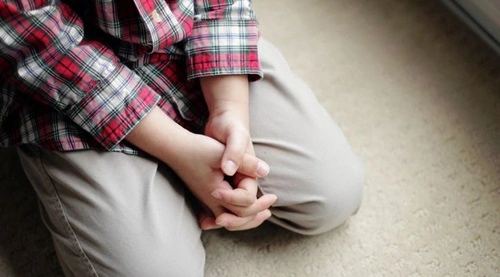The debate over prayer in public schools has been ongoing for decades, with strong arguments on both sides. While some believe that prayer fosters moral values and religious freedom, others argue that allowing prayer in schools violates the constitutional principle of separation of church and state, creates divisions among students, and can lead to discrimination.
As of 2024, U.S. courts and education experts continue to uphold restrictions on school-led prayer, emphasizing that public schools should remain neutral on religious matters to ensure fairness for all students. This article explores why prayer should not be allowed in schools, supported by legal precedents, research, and expert opinions.
1. Violates the Separation of Church and State

The First Amendment of the U.S. Constitution establishes the principle of separation between government institutions and religious practices.
- Public Schools Are Government Institutions: Since public schools are funded by the government, they must remain neutral in religious matters.
- Precedent from Supreme Court Cases: Landmark cases such as Engel v. Vitale (1962) ruled that organized prayer in public schools is unconstitutional, reinforcing that school-led religious activities violate the Establishment Clause of the First Amendment.
- Prevents Religious Favoritism: If schools allow prayer, they might favor one religion over another, leading to exclusion and legal challenges.
Public schools should not endorse or promote religious activities, ensuring that education remains free from religious influence.
2. Excludes and Alienates Non-Religious and Minority Students
Public schools serve students from diverse religious and cultural backgrounds, including atheists, agnostics, and students of non-Christian faiths. Allowing prayer in schools can create an exclusive atmosphere that isolates those who do not participate.
- Unfair Pressure to Conform: Students who do not follow the dominant religion may feel pressured to participate in prayer to avoid standing out.
- Creates Religious Divisions: A 2023 study from the Pew Research Center found that students in schools where religious practices were unofficially encouraged felt less included and more likely to be bullied for their beliefs.
- Discriminates Against Minority Religions: If a school predominantly practices one type of prayer, students from other faiths may feel excluded or marginalized.
To promote true inclusivity, schools should focus on academic and social growth rather than religious practices.
3. Prayer Can Lead to Peer Pressure and Religious Coercion
Even if prayer is labeled as “voluntary,” it can still create social pressure and coercion among students.
- Fear of Judgment: Students who choose not to participate in prayer may be labeled as disrespectful or unfaithful.
- Teacher and Peer Influence: A 2024 report by the American Civil Liberties Union (ACLU) found that students in schools with unofficial prayer groups felt pressured to join to fit in.
- Creates an Unfair Power Dynamic: If teachers or administrators support or lead prayer, students may feel obligated to join, fearing negative consequences.
No student should feel forced to choose between their beliefs and social acceptance in an educational setting.
4. Schools Should Focus on Education, Not Religious Practices
Public schools are meant to provide a secular education that prepares students for careers, critical thinking, and civic engagement—not religious indoctrination.
- Classroom Time Should Prioritize Learning: Instead of spending time on prayer, schools should focus on core subjects like math, science, history, and language arts.
- Religion Should Be Studied in a Historical and Cultural Context: Instead of practicing prayer, students can learn about world religions in history or social studies classes to gain a broader understanding of global cultures.
- Avoids Religious Conflicts: Schools should be safe spaces for learning, not places where religious debates or disagreements create tension.
By keeping religion out of the classroom, schools ensure that all students receive an unbiased and well-rounded education.
5. Prayer in Schools Could Lead to Legal Issues and Lawsuits
Allowing prayer in schools opens the door to legal battles and constitutional challenges, costing schools time and money.
- Legal Precedents Support Banning School Prayer: Court cases such as Lee v. Weisman (1992) and Santa Fe Independent School District v. Doe (2000) ruled that prayer in public schools is unconstitutional.
- Lawsuits from Parents and Advocacy Groups: If a school promotes prayer, parents and civil rights organizations can file lawsuits to challenge the practice.
- Financial Burden on Schools: Legal battles over religious issues can cost school districts millions of dollars, diverting funds away from educational programs and student resources.
To avoid unnecessary legal complications, public schools should maintain a strict separation between education and religious activities.
FAQs About Prayer in Schools
1. Can students pray on their own in school?
Yes. The First Amendment protects private, individual prayer. Students can pray silently on their own or during lunch, recess, or free time. However, schools cannot sponsor, organize, or encourage prayer.
2. Would prayer in school improve student behavior?
There is no evidence that prayer improves student behavior. A 2023 study by the National Education Association (NEA) found that schools focusing on mental health, counseling, and positive discipline strategies saw greater improvements in student behavior than those with religious practices.
3. What about religious freedom?
Religious freedom means students can practice their faith privately, but public schools cannot promote religious practices. Allowing school-led prayer would violate the rights of students who do not follow that faith.
4. How do private schools handle prayer?
Private schools, which do not receive public funding, can legally incorporate prayer and religious teachings. However, public schools must remain neutral to protect students of all faiths.
5. Shouldn’t schools allow prayer to respect traditions?
Respecting traditions is important, but public schools must serve all students equally. Schools should focus on education, inclusivity, and preparing students for the future without endorsing religious practices.
Conclusion
While prayer is an important part of many people’s lives, it does not belong in public schools. Allowing prayer in school violates the Constitution, creates religious divisions, pressures students, and distracts from education.
By keeping schools secular and inclusive, we can:
✅ Respect all religious beliefs without promoting one over another.
✅ Ensure students are not pressured or coerced into participating in prayer.
✅ Maintain legal protections and avoid costly lawsuits.
✅ Focus on academic excellence, mental health, and student success.
Public schools should remain neutral spaces where students of all backgrounds feel safe, respected, and included. Religious practices should be kept private, allowing students and families to choose how and when they engage in spiritual activities outside of school hours.


